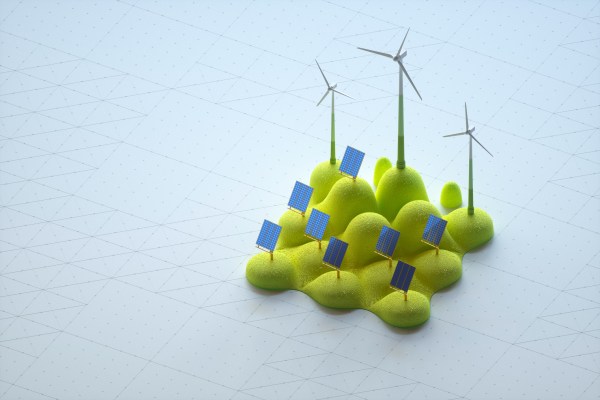Building wind and solar farms is an important part of building a new green grid, but a calm night stops their energy generation cold. It’s just as important to research and build green energy storage — and to that at scale requires federal intervention as soon as possible, suggests a new report from MIT.
“The Future of Energy Storage” is part of a series looking at the transition of power sources in America, and this one is particularly relevant given the momentum currently enjoyed by the solar and wind industries. Too much renewable energy sounds like a good problem to have, but if it can’t be relied on as a city or region’s main or only source of electricity, they’re going to feel the need to hedge their bets with a coal plant or something like it.
The solution is basically batteries: store excess power when the sun is out and the wind is high, and run off them at other times. It’s hardly a revelation, but the increasing reliance on what the study calls “variable renewable energy” means that what battery capacity we have isn’t nearly enough. We’ll need to increase it by orders of magnitude and across the country (and eventually the world, of course — but not every country is equally prepared to make this shift).
But the problem is this: Wind farms and solar make money, while storage facilities … don’t. Sure, they might break even on the long term, but they aren’t the easy money that solar farms have become. The most efficient and green energy storage options, like pumped hydro, are incredibly expensive and limited in the locations they can be built. While the most easily accessed technologies, like lithium-ion batteries, are widespread but neither capacious nor organized enough to serve as a grid supplement.
This is where the Department of Energy needs to step in, MIT says. The federal government has the means both to subsidize the utilization of existing storage options and to fund intensive research into new and promising ones. A hydrogen energy storage system could be a game changer, the report notes, but it isn’t going to fund itself. Like other critical infrastructure, it must be paid for up front by the feds and paid off over time.
But it isn’t just about writing checks. The DOE will need to evaluate the feasibility of doing things like repurposing old infrastructure like decommissioned power plants, reusing their connections to the grid and the communities that were built around them. If coal plants weren’t simply shut down but rather converted into hydrogen electrolysis centers, the jobs could stay but the emissions would go.
And then there’s the matter of the cost of the energy itself. The report warns that even with adequate storage, the cost of power would fluctuate far beyond the norms we’ve established today with our consistent (but dirty) fuel-based sources of energy. Maybe peak power today costs twice as much as off-peak power — but in 10 years, that gap could be much wider. On one hand, the low-end cost would be nearly zero — but peak power might be far more expensive.
The electricity market will change a lot, and consumers shouldn’t have to wonder whether running the dishwasher will cost them a penny or a buck. Instead, smart modeling of these cost and supply issues should be used to abstract away the variability and provide both consistency for consumers and payback for electricity generators.
The U.S. is at a good point for the feds to step in, and if they do so it will be watched eagerly by other countries working on making a similar leap. The report notes that India, for a number of reasons, is also facing a growing power and emissions crisis, and the U.S. may serve as a useful test bed for proving out technologies that could serve their larger population similarly well.
You can read the full report or the executive summary, both very accessible, at the report page here.
